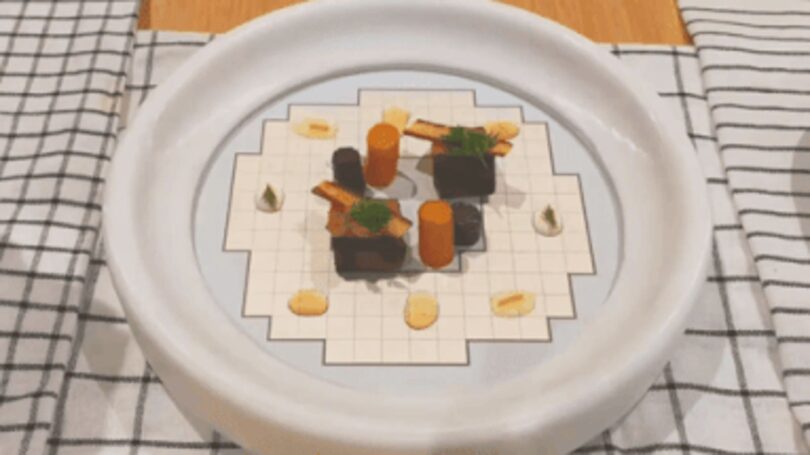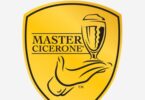The liquid dots can be programmed to move around the plate, thanks to a software-controlled … [+]
You’re sitting at lunch when a dollop of ketchup suddenly transports itself from one spot on your plate to another. No, you’re not living in a Pixar movie. You’re eating off a dish designed to make food “dance.”
Scientists from Monash University’s Exertion Games Lab designed the plate to serve up playful, interactive dining experiences. It’s fitted with a software-controlled electrode board that can be preprogrammed to make liquid fare like sauces and condiments move in different directions.
The researchers call the system Dancing Delicacies.
“Cooking and eating is more than simply producing a dish and then facilitating energy intake,” Professor Floyd Mueller, an expert in human-computer interaction at the Australian University, said in an email. “It is about sharing, caring, crafting, slowing down and self-expression, and Dancing Delicacies aims to highlight these virtues at a time when they are often forgotten.” Mueller is co-author of a research paper on the project published in DIS ‘23: Proceedings of the 2023 ACM Designing Interactive Systems Conference this summer and shared by Monash earlier this month.
The novel plate builds on the concept of “computational food,” the science of melding food with data and technology for more engaging meals and better health. Other objects to emerge from this experimental field include a shape-shifting fork that inflates depending on how fast a person eats, and another fork that can detect the amount of water in edibles. Both utensils came out of MIT’s Media Lab.
“The integration of food and computing will transform how we understand both computing and food as not two very different things, but a new frontier that combines the best of both,” Mueller said. Past Monash Exertion Game Lab projects include an interactive dessert that lets diners alter flavors before digging in.
The Dancing Delicacies team, which includes researchers from Carnegie Mellon University’s Morphing Matter Lab and Gaudi Labs in Switzerland, 3D-printed four plates that measure around 9 inches, the size of a regular plate. They turned the platters into dance floors for delicacies using a technology called “electrowetting,” which involves applying voltage to small volumes of liquids to stimulate movement.
But don’t expect to see hip-hopping hamburgers, at least not yet.
“While the technology doesn’t directly manipulate solid food items, creative dish design enables us to use liquid items in synergy with solids,” Jialin Deng, a Monash doctoral candidate in the department of human-centered computing, explained over email. “For example, food droplets can be utilized to carry a basil leaf across the plate or to dissolve a sprinkle of coffee powder.”
“Yin & Yang”: Black and white sauces aim to capture the essence of balance between opposing forces.
The researchers believe such scenarios have the potential to enrich the hospitality industry by offering experiences the likes of DoorDash probably won’t be delivering to doorsteps anytime soon. By directing the location of food on the plate using its electrodes, which can be turned on and off individually, chefs could animate their culinary creations to tell stories or transform servings into a kind of performance art.
As part of the Dancing Delicacies research, the team held workshops so chefs could experiment with the system. With the plate, “we really start to interact with the feelings and movements of the diner,” Matthew Birley, one of the participating chefs, said in a statement.
The chefs created two dishes. “Yin & Yang” situates black and white sauces in opposing patterns to capture the essence of balance. “A Taste Ballet” involves a choreographed medley of flavors that take diners on a sensory journey. Don’t worry about an aftertaste of electrodes. An insulating layer protects them from directly touching the grub.
Worksmith, an Australian firm that aims to bring innovation to the hospitality industry, supported the Dancing Delicacies research along with Australian Research Council and is working with the scientists to bring the setup to restaurants in the “not-so-distant future,” according to Mueller. But the academics envision their plates landing on tables beyond eateries, possibly into the hands of children bored with their peas and carrots.
If the plates take off, parents could find themselves uttering words rarely overheard at family dinner tables: “Kids, start playing with your food.”
Monash’s Exertion Games Lab wants to make meals more like stories or performance art.








